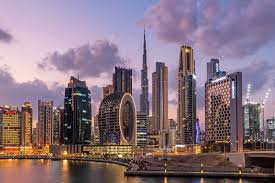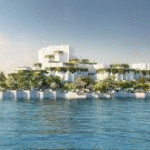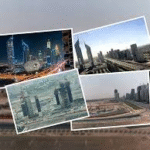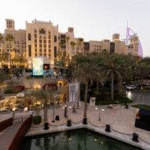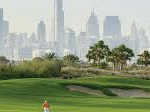Now Reading: Eco-Friendly Homes UAE: Unlocking Your Best Sustainable Lifestyle
-
01
Eco-Friendly Homes UAE: Unlocking Your Best Sustainable Lifestyle
Eco-Friendly Homes UAE: Unlocking Your Best Sustainable Lifestyle
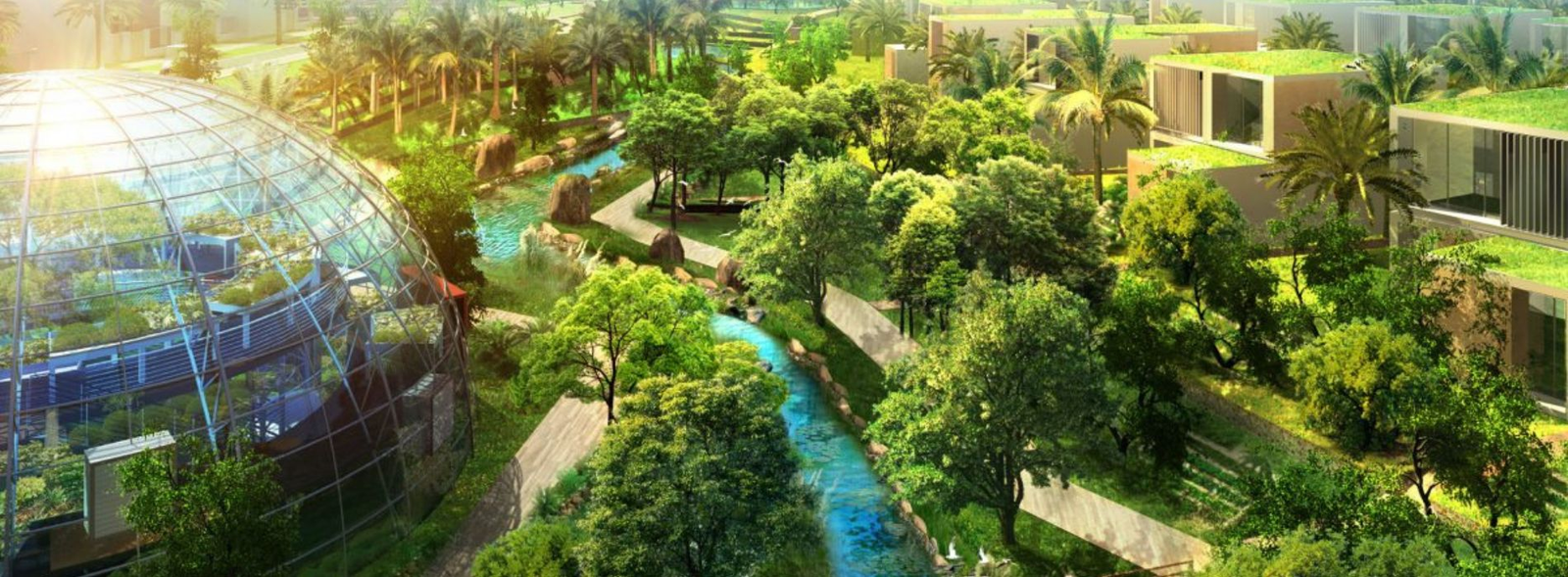
Table of Contents
Eco-Friendly Homes UAE: The United Arab Emirates, renowned for its futuristic skylines and rapid development, is increasingly becoming a beacon for sustainable living and green innovation, particularly in its residential sector. As global environmental concerns escalate, the UAE has proactively embraced the concept of eco-friendly homes, moving beyond conventional construction to integrate sustainable practices, cutting-edge technologies, and thoughtful design into its urban fabric. These homes are not merely about aesthetics; they represent a fundamental shift towards energy efficiency, water conservation, and healthier living environments, aligning with the nation’s ambitious Net Zero by 2050 strategic initiative.
What Defines an Eco-Friendly Home in the UAE?

An eco-friendly home in the UAE is designed and constructed to minimize its environmental impact throughout its lifecycle, from construction to operation. This involves adhering to specific sustainability standards and certifications, focusing on several key pillars:
- Energy Efficiency: A primary focus, given the high energy consumption for cooling in the UAE’s climate. This includes:
- High-performance insulation: Walls, roofs, and windows designed to minimize heat gain from the intense sun.
- Energy-efficient appliances: Using white goods, HVAC systems, and lighting (e.g., LED) that consume significantly less electricity.
- Renewable energy integration: Widespread use of solar panels (photovoltaic and thermal) to generate clean electricity or heat water, often with net-metering schemes like Shams Dubai that allow homeowners to feed excess energy back to the grid.
- Passive design strategies: Optimal building orientation (e.g., north-south facing), shading elements, and natural ventilation to reduce reliance on air conditioning.
- Water Conservation: Crucial in an arid region like the UAE. This involves:
- Low-flow fixtures: Water-efficient taps, showers, and toilets that reduce consumption without compromising performance.
- Greywater recycling systems: Treating and reusing wastewater from sinks and showers for irrigation or toilet flushing.
- Drought-tolerant landscaping: Utilizing native or adaptive plant species that require minimal irrigation.
- Smart irrigation systems: Sensors and automated controls that optimize water use for outdoor greenery.
- Sustainable Materials: Prioritizing materials with low embodied energy and reduced environmental footprint:
- Recycled and locally sourced materials: Reducing transportation emissions and reliance on virgin resources (e.g., recycled steel, concrete with recycled content, DuneCrete from desert sand).
- Non-toxic and low-VOC (Volatile Organic Compound) materials: Paints, adhesives, and finishes that contribute to better indoor air quality.
- Durable and long-lasting materials: Reducing the need for frequent replacements and minimizing waste.
- Indoor Environmental Quality (IEQ): Creating healthier living spaces:
- Optimal ventilation: Systems that ensure fresh air circulation and remove pollutants.
- Natural lighting: Maximizing daylight penetration to reduce artificial lighting needs and enhance well-being.
- Reduced noise pollution: Effective acoustic insulation for a more peaceful indoor environment.
- Waste Management: Minimizing waste generation during construction and operation:
- Construction waste recycling: Diverting debris from landfills.
- Community recycling programs: Facilitating residents’ ability to sort and recycle household waste.
- Organic waste composting: Encouraging composting for gardening and soil enrichment.
Why the UAE is Focusing on Sustainable Development and Green Building
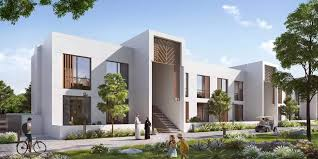
The UAE’s commitment to eco-friendly homes is driven by a confluence of factors:
- National Sustainability Vision: The UAE Vision 2021, UAE Green Agenda 2015-2030, and particularly the UAE Net Zero by 2050 Strategic Initiative underscore the nation’s dedication to reducing its carbon footprint and mitigating climate change. Green buildings are a cornerstone of this strategy.
- Resource Scarcity: As a desert nation, water and energy resources are precious. Sustainable building practices are essential for resource security and long-term viability.
- Economic Diversification: Investing in green technologies and sustainable infrastructure aligns with the UAE’s goal of diversifying its economy away from hydrocarbons towards a knowledge-based, green economy.
- Global Leadership: The UAE aims to set a global example in sustainable urban development, attracting international investment and talent aligned with green principles. Hosting COP28 in 2023 further amplified this commitment.
- Improved Quality of Life: Eco-friendly homes lead to healthier living conditions, lower utility bills, and enhanced comfort for residents, contributing to overall well-being.
Key Features and Technologies
Beyond the core pillars, eco-friendly homes in the UAE increasingly incorporate advanced technologies:
- Smart Home Automation: Integrated systems that monitor and optimize energy usage for lighting, HVAC, and appliances based on occupancy, weather, and user preferences.
- Building Management Systems (BMS): Centralized control systems for large residential complexes to optimize energy consumption and operational efficiency.
- Building-Integrated Photovoltaics (BIPV): Solar panels seamlessly integrated into building materials like facades or roofs, enhancing aesthetics while generating power.
- Advanced Glazing: Double-glazed windows with low-emissivity (Low-E) coatings to reduce heat transfer.
- District Cooling: Efficient centralized cooling systems that serve multiple buildings, reducing individual energy consumption.
- Electric Vehicle (EV) Charging Stations: Integration of EV charging infrastructure within residential communities, supporting sustainable transport.
Popular Eco-Friendly Communities and Developments in the UAE (as of Mid-2025)
The UAE boasts several pioneering eco-friendly communities that serve as models for sustainable urban living:
- The Sustainable City (Dubai): Perhaps the most prominent example, featuring solar-powered villas, car-free residential zones, extensive green spaces, urban farms, and comprehensive waste recycling. It aims for net-zero energy and features a unique social and economic sustainability model. The Sustainable City – Yiti in Oman is also under development, showcasing cross-border sustainable initiatives.
- Masdar City (Abu Dhabi): A globally renowned sustainable urban development designed for a low-carbon lifestyle. It features energy-efficient buildings, extensive use of renewable energy (solar farms), driverless electric transportation, and innovative water and waste management systems. It’s a living laboratory for sustainable urban development.
- Sharjah Sustainable City: A fully integrated, net-zero energy community designed to offer a world-class sustainable lifestyle. It incorporates solar power, water recycling, and green infrastructure to minimize environmental impact.
- Dubai Hills Estate: While a luxury development, it integrates green living with extensive parks, golf courses, and an emphasis on sustainable landscape design and energy-efficient building practices.
- Al Barari (Dubai): Known for its lush green spaces, botanical gardens, and focus on nature-inspired living, with properties designed to blend seamlessly with the environment and promote water conservation.
- Dubai Silicon Oasis (Silicon Park): This project articulates Dubai’s vision for a smart and sustainable city, with buildings designed for energy efficiency and integration of smart technologies.
- DAMAC Hills 2: A large-scale development that increasingly incorporates eco-friendly elements, including solar panels, water recycling, and ample green spaces.
Benefits for Homeowners
Owning an eco-friendly home in the UAE offers tangible advantages:
- Significant Cost Savings: Reduced utility bills (electricity and water) due to energy-efficient design, appliances, and renewable energy systems. Homeowners can see up to a 40% reduction in energy consumption.
- Enhanced Health and Well-being: Improved indoor air quality (due to non-toxic materials and better ventilation), abundant natural light, and access to green spaces contribute to a healthier and more comfortable living environment. Studies even suggest better cognitive function and sleep quality in green-certified buildings.
- Higher Property Value: Eco-friendly homes are increasingly desirable, commanding higher resale values (often 7-12% higher for certified buildings) and attracting a wider pool of buyers interested in sustainability and long-term savings.
- Reduced Environmental Footprint: Directly contributes to a smaller carbon footprint, lower water consumption, and less waste, aligning with personal environmental values.
- Government Incentives: Potential benefits like reduced fees for green building certifications, faster permit approvals, and incentives for solar panel installation (e.g., Shams Dubai) for developers, which can translate to better value for homeowners.
- Climate Resilience: Homes built with sustainable practices are often more resilient to extreme weather conditions, including the UAE’s high temperatures.
Government Initiatives and Regulations Supporting Green Building
The UAE government plays a crucial role in driving the green building agenda through various policies and regulations:
- Estidama Pearl Rating System (Abu Dhabi): A mandatory green building rating system specific to Abu Dhabi, evaluating buildings based on criteria like energy efficiency, water conservation, materials, and indoor environmental quality. Buildings must achieve a minimum Pearl rating (e.g., 1 Pearl for private, 2 Pearl for government-funded projects).
- Al Safat – Green Building Evaluation System (Dubai): Developed by Dubai Municipality, Al Safat, formerly known as Dubai Green Building Regulations and Specifications, provides guidelines and mandates for sustainable construction in Dubai. It aims to reduce energy, water, and material consumption and improve public health.
- Green Building Codes and Regulations (Federal & Emirate-specific): Various regulations across the UAE encourage the use of sustainable building materials, energy-efficient HVAC systems and lighting, and reduce water consumption through efficient fixtures and greywater recycling.
- Emirates Green Building Council (EmiratesGBC): Plays a pivotal role in promoting and enforcing green building standards, offering certifications (like LEED), and providing resources for developers and industry professionals.
- UAE Energy Strategy 2050: Aims to increase the contribution of clean energy in the total energy mix to 50% by 2050 and reduce carbon footprint of power generation by 70%. Green buildings are critical to achieving these targets.
- Financial Incentives: The government offers incentives such as financial rebates, faster permit approvals, and reduced utility costs to developers who integrate green building practices.
Challenges in Adopting Eco-Friendly Homes
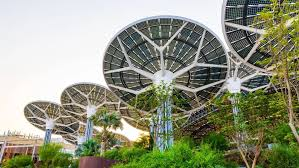
Despite the strong push, certain challenges persist:
- Initial Higher Costs: While long-term savings are significant, the upfront cost of sustainable materials, renewable energy systems, and advanced technologies can be higher than conventional construction.
- Knowledge Gap: A need for continuous education and training for architects, engineers, contractors, and even real estate agents to fully understand and implement green building practices.
- Supply Chain: Ensuring a consistent and cost-effective supply of certified sustainable building materials and technologies can sometimes be a hurdle.
- Behavioral Change: Encouraging residents to adopt eco-conscious habits (e.g., proper recycling, mindful energy use) to maximize the benefits of an eco-friendly home.
- Measurement and Verification: Accurately measuring and verifying the actual energy and water savings over time requires robust systems and data collection.
The Future Outlook for Eco-Friendly Homes in the UAE (2025-2026)
The trajectory for eco-friendly homes in the UAE is one of continued growth and heightened prominence:
- Mandatory Standards Expansion: Expect existing green building codes to become more stringent and potentially expand to cover a wider range of building types and retrofitting of existing structures.
- Increased Demand: Growing environmental awareness among consumers, coupled with tangible economic benefits, will fuel demand for sustainable properties. Property developers are increasingly responding to this market shift.
- Technological Advancements: Further integration of AI, IoT, and smart city technologies to optimize building performance, resource management, and occupant comfort.
- Focus on Net-Zero and Positive Energy Buildings: More ambitious projects aiming for net-zero energy consumption or even generating more energy than they consume will emerge.
- Green Financing: Banks and financial institutions will likely offer more attractive financing options (green mortgages) for eco-friendly homes, making them more accessible.
- Circular Economy Principles: Greater emphasis on waste reduction, reuse, and recycling in construction and operations, moving towards a more circular economy model for real estate.
- International Collaboration: The UAE will continue to collaborate with global partners to adopt best practices and accelerate sustainable development in its built environment.
In essence, eco-friendly homes are no longer a niche market in the UAE but a cornerstone of its national development strategy. They represent a harmonious blend of luxurious living and environmental responsibility, offering a healthier, more cost-effective, and future-proof lifestyle. As the UAE progresses towards its Net Zero by 2050 goals, these sustainable residences will play an increasingly vital role in shaping the nation’s green and prosperous future. Sources
WATCH MORE : https://www.youtube.com/watch?v=OVLgw2zK1hM
READ MORE: Smart Contracts in Real Estate Dubai: Transforming Secure Deals




